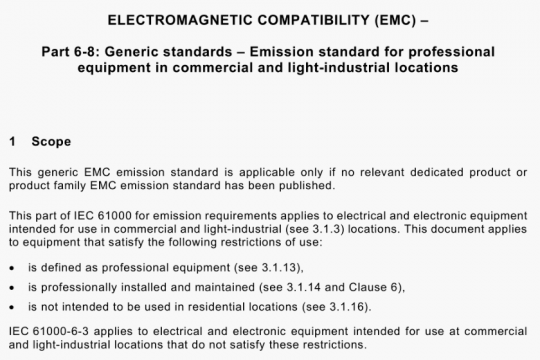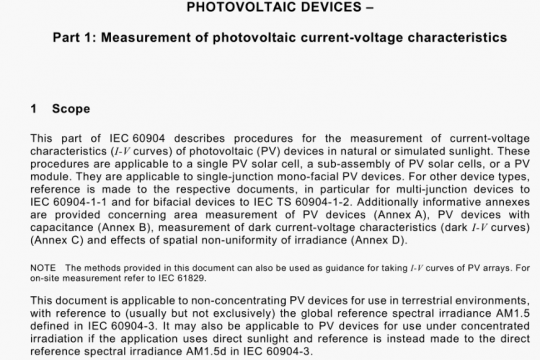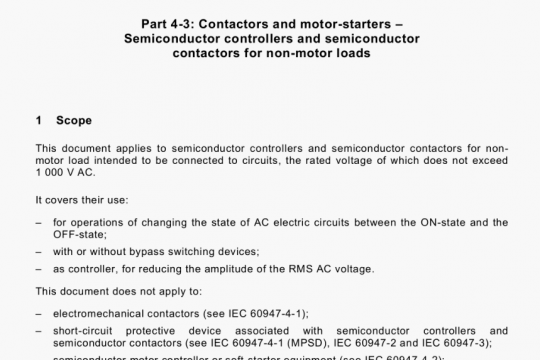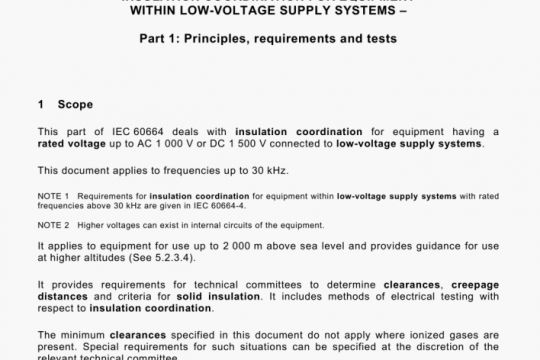IEC/TR 62778-2012 pdf free
IEC/TR 62778-2012 pdf free.Application of IEC 62471 for the assessment of blue light hazard to light sources and luminaires.
lEG 62471 is a comprehensive horizontal standard, describing all potential health hazards associated with artificial optical radiation, from the ultraviolet, visible, and infrared portions of the spectrum. This Technical Report deals exclusively with the hazard described in 4.3.3 and 4.3.4 of IEC 62471 :2006. This hazard is called the retinal blue light hazard, as it is an effect mainly induced by the blue portion of the visible spectrum, which has its potentially damaging effects on the retina. The effects are described in Clause A.3 to the same standard.
Because the effect takes place on the retina, it is a function not only of the total amount of light that reaches the eye, but also of the size of the light source that produced this light. Larger light sources are imaged onto a larger portion of the retina, and therefore produce a lower irradiance on the retina than smaller light sources producing the same amount of light in the direction of the viewer’s eye. Subclause 4.3.3 of IEC 62471 :2006 takes this into account by relating the maximum permissible exposure time, tmax, to the radiance of the light source. Radiance (unit: W/(m2sr) ) is a quantity describing the radiometric intensity, which is the radiation power emitted into a certain direction, divided by the apparent area of the light source when viewed from that same direction. In an imaging system, such as the eye, the local irradiance on the image plane (which for the eye is on the retina) is proportional to the radiance of the source.
Only when the light source is too small to be imaged sharply, or when it is so small that it will never be fixated on the same portion of the retina for so long that it can produce any damage. the radiance value is not the appropriate value. In this case, Subclause 4.3.4 of lEG 62471 :2006 shall be applied, where the irradiance on the pupil is used as a value proportional to the effective irradiance on the retina.
The question whether a light source is large”, such that 4.3.3 shall be applied, or ‘small”, such that 4.3.4 shall be applied, depends on the size of the light source as well as on the viewing distance, The subtended angle of the light source is used as discriminating quantity. When the time needed to produce damage is longer than 10 s. lEG 62471 states that the limiting subtended angle for a light source to be large or small is 0,011 rad. For light sources just on the edge between large and small, tmax can be calculated either way (using its radiance according to 4.3.3 and using the irradiance according to 4.3.4), which will produce the same result within about 5 %. The deviation of 5 % is caused by rounding of the conversion factors used to convert the radiometric quantity to ma,.
In the context of lEG 62471, ‘light source’ means any product used to produce light. In real life, there is a hierarchy of lighting products, where light source is generally used to describe the constituent component of the lighting product that actually produces the light. Since some of the other components of the lighting product, most notably the luminaire optics, may change the radiation characteristics of the primary light source, it is important to know whether and how a photobiological assessment of the primary light source can be transferred to the product using this primary light source as light generating component.
Next to this, IEC 62471 makes a statement about risk classification of products. Because the tma, values as calculated in 4.3 of lEG 62471 :2006 are determined both by the product itself and by the distance from which it is viewed, these cannot in themselves be used to determine a unique risk classification for a product. For this reason, Clause 6 states the standard conditions where photobiological safety must be evaluated to determine risk classification of the products. For lamps intended for general lighting service (GLS), as defined in 3.11 of the same standard, the hazard values shall be reported at a distance which produces an illuminance of 500 lx. but not at a distance less than 200 mm. For all other light sources. including pulsed lamp sources, the hazard values shall be reported at a distance of 200 mm. Examples of these non-GLS light sources are given in the same 3.11 and include lamps for such uses as film projection, sun-tanning, and industrial processes. In some cases, the same lamp may be used in both GLS and special applications and in such cases should be evaluated and rated for the intended applications. At the evaluation distance. tma. IS determined, and when it falls below 100 s, the product is classified as Risk Group 2 (RG2) and a cautionary labelling is required.IEC/TR 62778 pdf free download.




